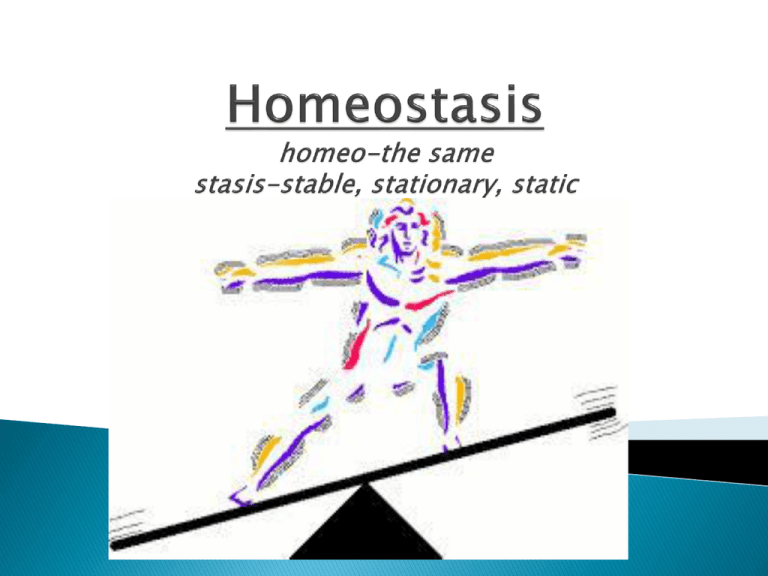ORGANIZATION OF THE HUMAN BODY
advertisement

COMPONENTS OF CREATING BALANCE 1. STIMULUS- change that occurs in the internal environment ( ex. During exercise, not enough oxygen getting to cells) 2. RECEPTORS -Sensors that monitor the internal environment (ex. Nerve cells detect the drop in O2 levels in the blood when exercise begins) 3. CONTROL CENTER (set point)-determines what a particular value should be, usually determined by the brain.(ex. Brain-identifies O2 levels are low and stimulates change) 3. EFFECTORS-cause responses that alter conditions in the internal environment, usually they are muscles or glands (ex. Adrenal glands stimulated by brain to release adrenaline which speeds up the heart rate to deliver more O2 needed for cells) 5. RESPONSE-how the change is corrected (ex. Heart rate increases) 1.) Negative Feedback • Causes conditions to return to normal. Reduces the deviation from the set-point. The action of the effectors is shut off. • Returns the system to normal (lessens the deviation from the set point). • The change is opposite to the original change. Example 1: Blood sugar Increase -Too much sugar in the blood releases insulin which causes the body to increase storage of sugar which ultimately decreases sugar levels in the blood. Example 2: Body Temperature Decrease-if body temperature drops, muscles begin contracting (shivering) to produce heat which ultimately increases the body temperature. Example 3: Body Temperature Increase –if body temperature increases, blood vessels expand to release heat which ultimately decreases body temperature. ****Notice that all the examples return the body to its set point. Change is opposite to the original change. Negative feedback controls body temperature. 2.) POSITIVE FEEDBACK • Output of a system turns on or increases the action of the effectors. • Moves the system away from normal (increases the deviation from the set point). • The change is the same as the original change. Example 1: Blood clotting- the chemicals (platelets and fibrin) that carry out the processes of clotting are turned on to stimulate more clotting in order to minimize bleeding. Example 2: Childbirth-increase in uterine contractions help to push the child out of the womb.

